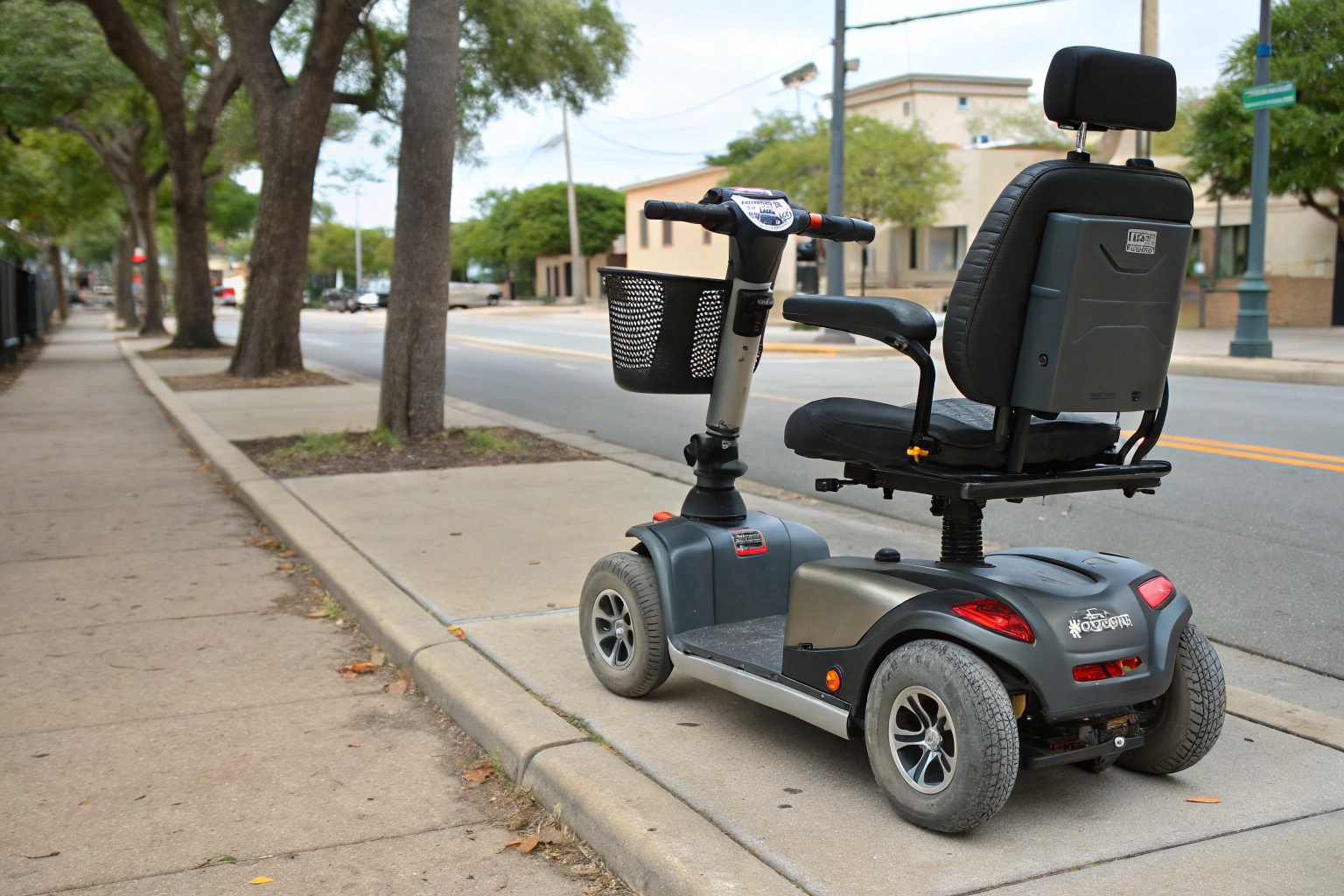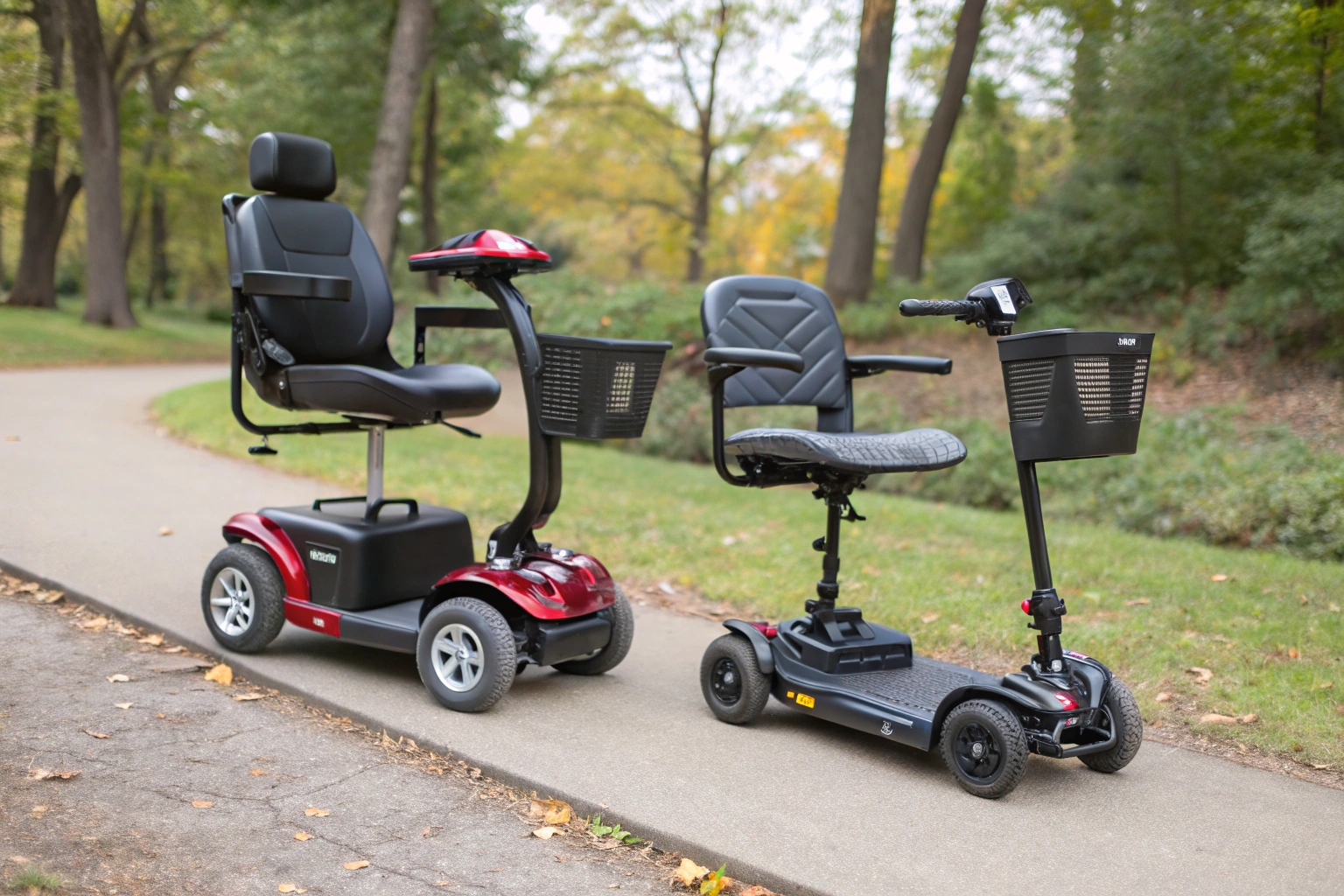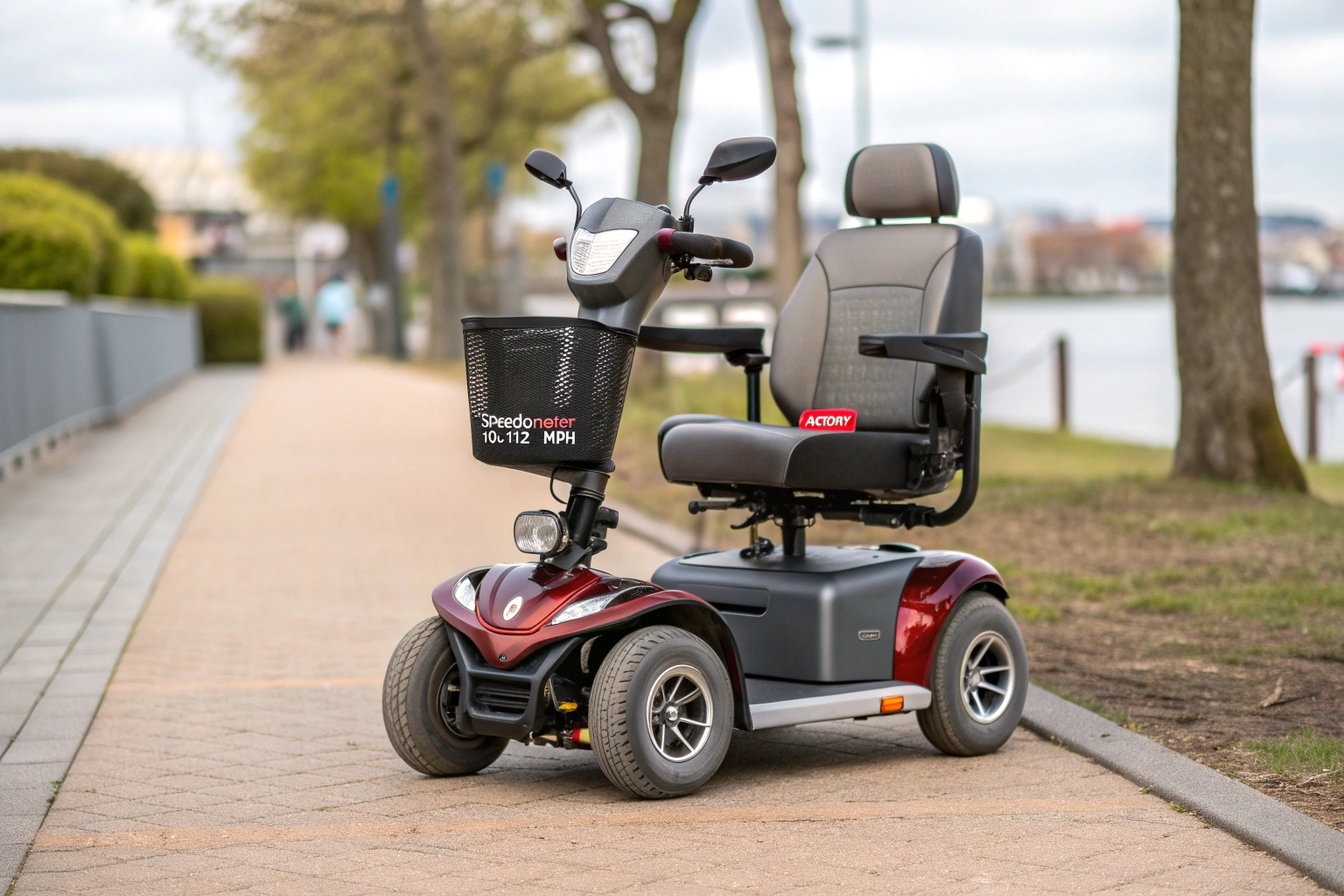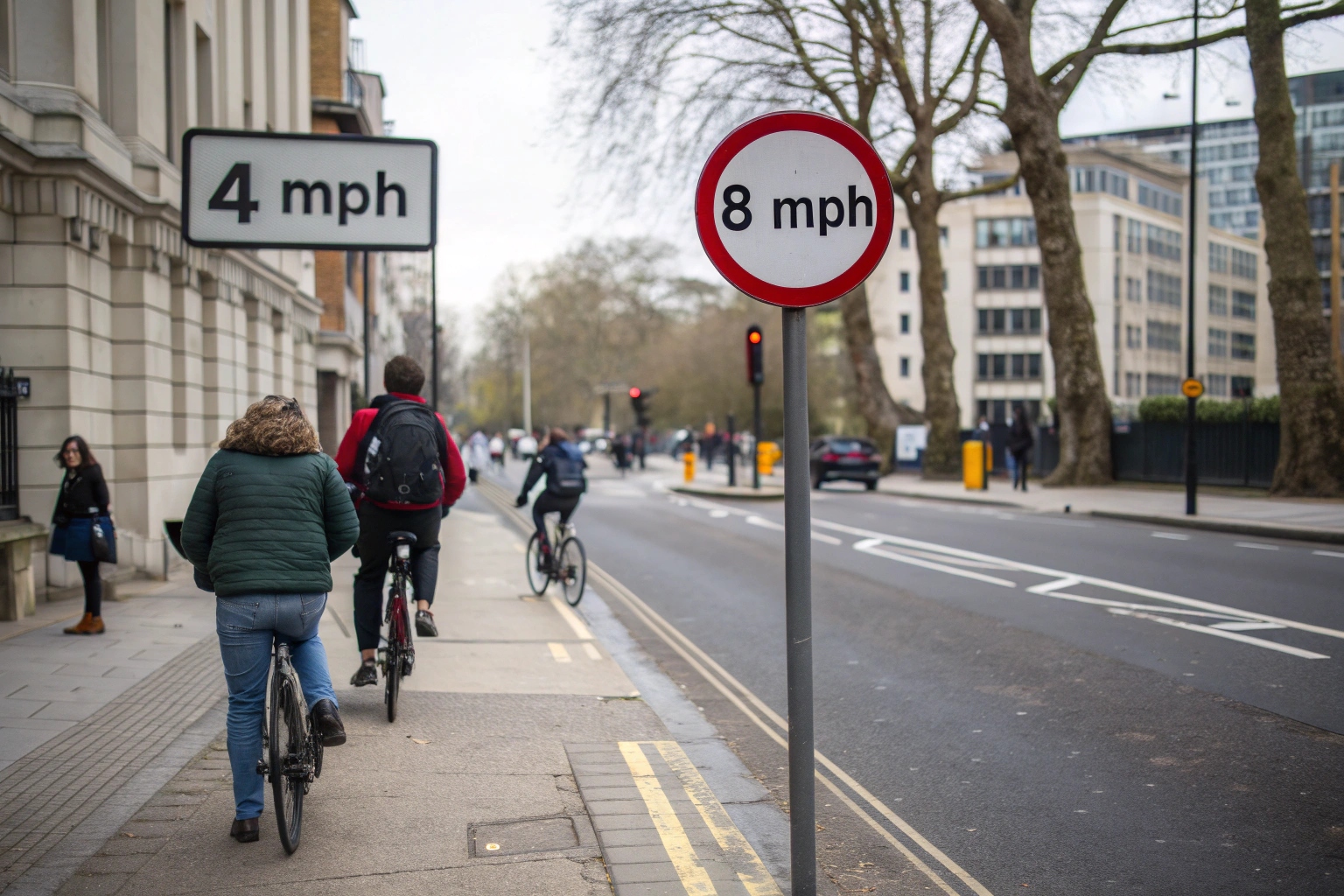Your customers want to know how fast scooters can go. You want to give them a clear answer but worry about the complex laws and safety rules that come with speed.
Most mobility scooters have a top speed between 4 mph and 9 mph (about 6-15 km/h). This speed is intentionally limited by the factory to comply with laws for medical devices used on sidewalks and in public spaces.

As a manufacturer, one of the first things we decide when designing a new model is its top speed. This isn't just about performance; it's about purpose and legality. We build these vehicles so people can safely go to the park, the supermarket, or through an airport. They are not designed to compete with cars on the road. Understanding this distinction is the key to selling the right product and keeping your business and your customers safe. Let's look at the real-world speeds and the rules that govern them.
What is the top speed of a mobility scooter?
You see a range of speeds advertised online, from slow to surprisingly quick. This makes it hard to know what is standard and what your customers should actually expect.
Smaller, portable travel scooters typically have a top speed of 4-5 mph (6-8 km/h). Larger, more robust models designed for outdoor use often have a higher top speed, usually around 8-9 mph (12-15 km/h).

When our distributors ask for product specs, we always explain that scooters fall into different classes based on their intended use, which determines their speed. The speed is not random; it's a fixed setting we program into the scooter's electronic controller. It's a deliberate choice tied to safety and regulation. There are generally two main categories you will encounter.
- Pavement / Indoor Scooters (Class 2): These are the smaller, often foldable models designed for use inside buildings, on smooth sidewalks, and in shopping centers. Their speed is limited to around 4 mph (6 km/h) to ensure they can be operated safely around pedestrians. They are lightweight and have a tight turning radius.
- Road / Outdoor Scooters (Class 3): These are larger, more powerful scooters with bigger wheels, suspension, and full lighting kits. They are built for longer outdoor journeys. Their speed is higher, typically capped at 8 mph (12 km/h), allowing them to keep up with the flow of pedestrians on wide paths or be used on the road where allowed.
The key takeaway is that the top speed is matched to the scooter's design and purpose. A small indoor scooter will never be as fast as a large outdoor model.
What is the fastest mobility scooter on the market?
You see incredible videos of custom scooters going over 60 mph. You might wonder if this is a new market trend you should be getting into with your business.
The 'fastest' scooters are custom-built racing machines, not medical devices. For commercially available, legal mobility aids, the fastest models are capped by the factory at around 10-12 mph (16-20 km/h), and they are often sold as recreational scooters.

I have seen these "record-breaking" scooters. They are fascinating engineering projects, but they are not Scooters de mobilidade in the legal or practical sense. As an importer or distributor, it is critical to understand the difference. Selling a 60 mph machine as a "mobility aid" would create massive legal and liability problems. A true mobility scooter is defined by its purpose: to provide mobility to someone with a physical limitation. They must be stable, safe, and legally compliant.
Comparing these two types of vehicles shows why they are worlds apart:
| Feature | True Mobility Scooter | High-Speed "Record" Scooter |
|---|---|---|
| Legal Classification | Medical Device (e.g., CE, FDA certification) | Unclassified, Recreational Vehicle, or Go-Kart |
| Intended User | Person with limited mobility, often elderly | Enthusiast, hobbyist, or racer |
| Top Speed | Legally limited to 4-9 mph (6-15 km/h) | 30-100+ mph |
| Where to Ride | Sidewalks, parks, public spaces, sometimes roads | Private property, race tracks |
| Business Risk for Sellers | Low, when selling certified products correctly. | Very High. Risk of fines and lawsuits. |
From a factory perspective, we would never build a scooter faster than the legal limits for a medical device. Our business, and our clients' businesses, depend on providing safe, compliant vehicles.
What is the legal maximum speed in most countries?
You ship to different regions, and the rules are never the same. You need to know the general speed limits to make sure you are importing a product that can be legally sold.
Most countries follow a two-tier system: around 4 mph (6 km/h) for sidewalk use and 8 mph (12 km/h) for road use where permitted. You must check the specific transport laws for your country.

One of the first questions we ask a new distributor is, "What are the local laws in your country?" While the principles are similar worldwide, the exact numbers can vary. Importing a container of 8 mph scooters into a country where they are not allowed on sidewalks could be a business disaster. It is the importer's responsibility to know their local rules.
Here is a general guide to how different regions classify mobility scooters.
| Region | Class for Sidewalks (Pavement) | Class for Roads | Notas |
|---|---|---|---|
| UK | Class 2: Up to 4 mph | Class 3: Up to 8 mph on roads, 4 mph on pavements | Class 3 scooters must be registered with the DVLA. |
| EU | Varies by country, but ~6 km/h (4 mph) is common. | Varies, but ~12-15 km/h (8-9 mph) is typical. | CE marking is required, certifying it as a medical device. |
| USA | No federal limit. Considered a "Personal Mobility Device." | Governed by state and local laws (e.g., city ordinances). | FDA regulates them as medical devices for manufacturing. |
| Australia | Limited to 10 km/h (6 mph) on public paths and roads. | Can be used on roads in some states if registered. | Rules can vary significantly between states. |
As you can see, the 4 mph / 8 mph (or 6 km/h / 12 km/h) structure is a very common pattern. We build our scooters so the controller can be set to comply with these different regional limits before we ship them.
How does speed affect battery life and safety?
Your sales team wants to advertise the highest speed possible. But you know there are always trade-offs, and you need to warn them about the hidden costs of pushing for speed.
Driving a scooter at its top speed drains the battery much faster, significantly reducing its maximum range. It also makes the scooter less stable and increases the braking distance, raising the risk of an accident.

This is basic physics. It takes much more energy to push an object through the air at 8 mph than it does at 4 mph. The relationship is not linear; the energy required increases exponentially with speed. I always tell my clients to think of it like driving a car—your fuel economy is much worse in stop-and-go city traffic or when speeding on the highway than it is at a steady, moderate speed. A customer who rides at full speed all the time may only get 50-60% of the advertised maximum range.
The safety implications are even more serious.
- Stability: Mobility scooters have a high center of gravity. A sharp turn at 8 mph is far more likely to cause a tip-over than the same turn at 4 mph.
- Braking Distance: Doubling the speed can quadruple the distance it takes to come to a complete stop. This is critical in an emergency or when navigating around pedestrians.
- User Reaction Time: The primary users of these devices may be elderly or have disabilities. A lower speed provides more time to react to obstacles like curbs, cracks in the pavement, or a child running into their path.
A scooter's speed is limited for very good reasons. Pushing those limits compromises the two most important things for a user: getting to their destination safely and having enough battery to get back home.
Conclusão
Mobility scooter speeds are legally and practically capped at 4-9 mph to ensure user safety and compliance. Claiming higher speeds often means selling a different, non-medical class of vehicle with significant risks.

